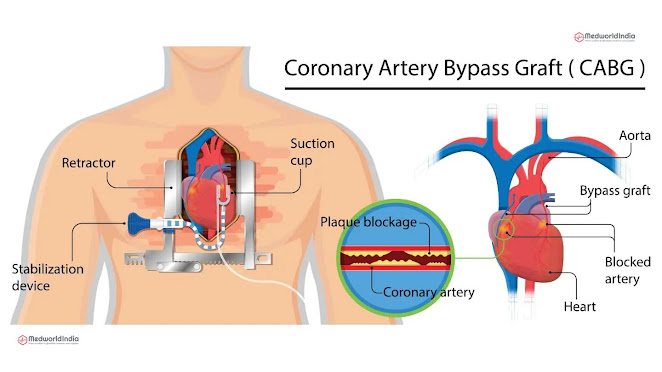Skin cancer is one of the most common forms of cancer worldwide, affecting millions of people each year. While it is highly preventable and treatable when detected early, it remains a significant public health concern. Understanding its causes, symptoms, and preventive measures can help reduce the risk and ensure timely intervention.
Skin cancer occurs when abnormal skin cells grow uncontrollably due to DNA damage, often caused by excessive exposure to ultraviolet (UV) radiation from the sun or artificial sources like tanning beds. The three main types of skin cancer are:
Types of Skin Cancer
- Basal
Cell Carcinoma (BCC) – The most common and least aggressive form, BCC
typically appears as a pearly bump or flesh-colored lesion, often on
sun-exposed areas.
- Squamous
Cell Carcinoma (SCC) – This type grows more aggressively than BCC and
often presents as a scaly, red patch, wart-like growth, or an open sore.
- Melanoma
– The deadliest form of skin cancer, melanoma originates in
pigment-producing cells called melanocytes. It often manifests as an
irregularly shaped, dark-colored mole or lesion.
Several factors contribute to the development of skin
cancer, including:
- Prolonged
exposure to UV radiation
- Fair
skin, light hair, and freckles
- A
history of sunburns
- Family
history of skin cancer
- Weak
immune system
- Exposure
to harmful chemicals
- Aging
and genetic predisposition
Symptoms of Skin Cancer
- New, unusual growths on the skin
- Changes in existing moles (size, shape, color, or texture)
- Persistent sores that do not heal
- Itching, bleeding, or pain in a mole or lesion
- Red, scaly patches or lumps
Risk Factors for Skin Cancer
Several factors increase the risk of developing skin cancer,
including:
- Excessive
sun exposure
- Use
of tanning beds
- Weakened
immune system
- Occupational
exposure to harmful substances
- Genetic
predisposition
Prevention Strategies
While some risk factors like genetics cannot be changed,
several protective measures can significantly reduce the likelihood of
developing skin cancer:
1. Sun Protection:
- Use
a broad-spectrum sunscreen (SPF 30 or higher) daily
- Wear
protective clothing, hats, and sunglasses
- Seek
shade, especially during peak sun hours (10 AM - 4 PM)
- Avoid
tanning beds
2. Regular Skin Examinations:
- Perform
self-checks monthly for any changes in moles or skin lesions
- Visit
a dermatologist annually for a professional skin screening
3. Healthy Lifestyle Choices:
- Maintain
a balanced diet rich in antioxidants
- Stay
hydrated
- Avoid smoking and excessive alcohol consumption
If diagnosed early, skin cancer can often be treated
successfully. Treatment options vary based on the type and stage of cancer but
may include:
- Surgical
Removal – The most common treatment, involving excision of the
affected tissue.
- Mohs
Surgery – A specialized technique that removes cancerous layers while
preserving healthy tissue.
- Cryotherapy
– Freezing abnormal cells with liquid nitrogen.
- Radiation
Therapy – Using high-energy rays to target and destroy cancer cells.
- Chemotherapy
& Immunotherapy – Used for advanced cases to attack cancer cells
systematically.
Recovery depends on the type and extent of surgery:
- Mild
discomfort, redness, or swelling may occur post-surgery.
- Healing
may take a few weeks, depending on the treatment type.
- Proper
wound care and following doctor's advice can speed up recovery.
- Regular
follow-ups are essential to monitor for recurrence.
Risks and Complications
Although skin cancer treatments are generally effective,
there are potential risks and complications:
- Infection
at the surgical site
- Scarring
or changes in skin texture
- Recurrence
of cancer
- Nerve
damage in severe cases
- Adverse
reactions to radiation or chemotherapy
Q2: Can skin cancer be completely cured? A: If
detected early, most types of skin cancer can be treated successfully.
Q3: What is the best sunscreen for skin cancer
prevention? A: A broad-spectrum sunscreen with SPF 30 or higher,
water-resistant, and applied regularly.
Q4: Is skin cancer hereditary? A: While genetic
predisposition plays a role, environmental factors like sun exposure contribute
significantly.
Q5: Can dark-skinned individuals get skin cancer? A:
Yes, although less common, skin cancer can affect individuals of all skin
tones.
Conclusion
Skin cancer is a serious but largely preventable condition. By adopting sun safety habits, being aware of risk factors, and conducting regular skin checks, individuals can protect themselves from this potentially life-threatening disease. If you notice any suspicious skin changes, consult a healthcare professional promptly to ensure early detection and treatment.




